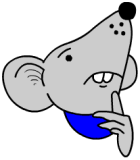 This is the first in my series of ‘Booster’ worksheets for year 6 children who are about to take the SAT tests. They aim to boost a child’s score in the test papers by making them familiar with the types of questions that they will come across.
This is the first in my series of ‘Booster’ worksheets for year 6 children who are about to take the SAT tests. They aim to boost a child’s score in the test papers by making them familiar with the types of questions that they will come across.
It is rare for a straightforward sum of the type 34 + 67 = to appear on the paper. Usually sums are in the form of number sentences with numbers missing. Often there can be more than one correct answer.
For example, if you look at the first question, there are many possible answers. A tip here is to keep it simple. Why not write 46 + 10? Perfectly correct!
 Looking at my stats I can see that everyone is very busy with shopping, eating, drinking etc so will join you all and have a week off. I will leave you with a little puzzle in case you have nothing better to do!
Looking at my stats I can see that everyone is very busy with shopping, eating, drinking etc so will join you all and have a week off. I will leave you with a little puzzle in case you have nothing better to do! “High-quality direct teaching is oral, interactive and lively. It is not achieved by adopting a simplistic formula of ‘drill and practice’, or by expecting pupils to teach themselves from books. It is a two-way process in which pupils are expected to play an active part by answering questions, contributing points to discussions, and explaining and demonstrating their methods to the class.”
“High-quality direct teaching is oral, interactive and lively. It is not achieved by adopting a simplistic formula of ‘drill and practice’, or by expecting pupils to teach themselves from books. It is a two-way process in which pupils are expected to play an active part by answering questions, contributing points to discussions, and explaining and demonstrating their methods to the class.”